Office on Smoking and Health At A Glance

CDC’s Office on Smoking and Health (OSH) is the lead federal agency for comprehensive tobacco prevention and control. OSH prioritizes health equity, creating resources and opportunities for all people to be as healthy as possible. With this foundation, OSH saves lives and money by preventing and reducing the use of commercial* tobacco products—the leading cause of preventable disease, disability, and death in the United States.
* When CDC refers to tobacco on this web page, we are referring to the use of commercial tobacco products and not the sacred and traditional use of tobacco by some American Indian communities.
What We Do
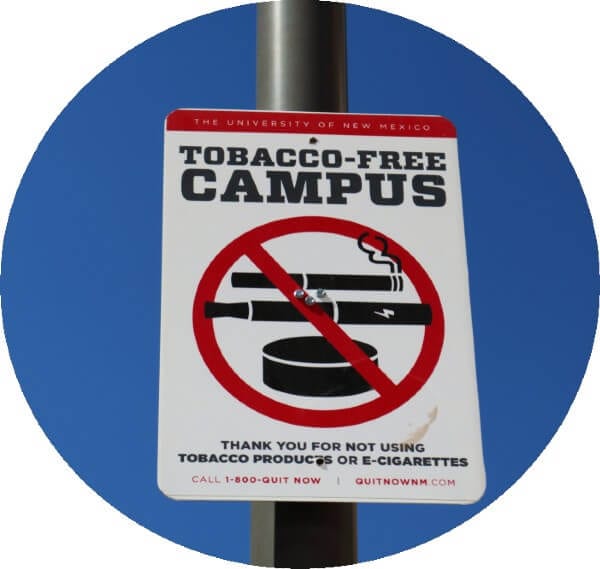
With an FY 2023 budget of $246.5 million, OSH works to prevent people from using tobacco products, help people quit using tobacco products, reduce secondhand smoke exposure, and advance health equity by identifying and eliminating tobacco-related disparities.
To meet these goals, OSH:
- Measures how tobacco use affects population groups.
- Promotes what works best to prevent tobacco use and help people quit tobacco use.
- Funds and guides states, territories, tribes, and nonprofit organizations to use proven strategies and study promising practices.
- Informs the public about the dangers of tobacco use and breathing secondhand smoke.
Why We Do It
In the United States:
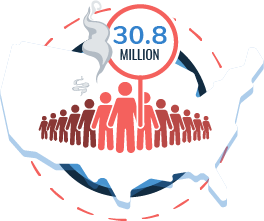
28.3 MILLION
adults smoke cigarettes.
3.08 MILLION
middle and high school students use tobacco products.
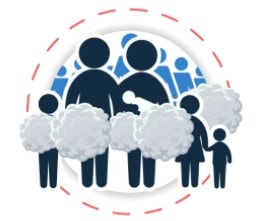
1 IN 4 PEOPLE
who don’t smoke are exposed to secondhand smoke.
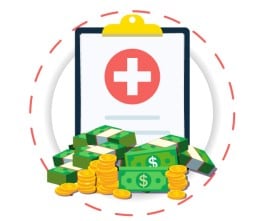
Over $240 BILLION
is spent each year to treat smoking-related diseases.
Some groups of people have a higher percentage of tobacco use, secondhand smoke exposure, and related health problems, as well as less access to treatment to help them quit. These disparities can be based on where people live, the kind of job they have, whether they have health insurance, and factors like race, ethnicity, age, or sexual orientation.
Every day in the United States, about 1,600 young people under age 18 try their first cigarette, and nearly 200 end up smoking cigarettes daily. Over 16 million people live with at least one disease caused by smoking, and smoking-related illness costs the United States more than $600 billion in 2018, including more than $240 billion in health care spending and nearly $372 billion in lost productivity.
How We Do It
Measure Tobacco Use and Translate Data Into Effective Action
CDC collects, studies, and shares information to assess tobacco use and its effects on health, promote evidence-based approaches, and measure progress toward goals. CDC uses this information to:
- Monitor changes and trends in the use of tobacco products among young people and adults.
- Understand tobacco-related knowledge, attitudes, and behaviors among young people and adults.
- Promote comprehensive tobacco control programs and policies.
- Answer important questions about tobacco use and tobacco control.
- Measure how tobacco use affects population groups to reduce health disparities and advance health equity.
Information is shared in high-quality reports, easy-to-understand web resources and interactive data applications. The Tobacco Use Data Portal provides access to the latest tobacco prevention and control data, graphs, and maps, which users can download for more analysis. The STATE System provides data on state tobacco use prevention and control policies.
Examples of Our Impact
- The National Youth Tobacco Survey collects information on use, beliefs, and knowledge about tobacco products among middle and high school students.
- Surgeon General’s Reports form the basis of the public’s understanding of the health effects of tobacco use, secondhand smoke exposure, and evidence-based tobacco control strategies.
- Best Practices for Comprehensive Tobacco Control Programs outlines how to develop, implement, and budget for evidence-based tobacco prevention and control programs.
- Global Tobacco Surveillance System Data are available from four tobacco surveys conducted around the world. CDC’s global tobacco work is supported by the CDC Foundation through donations from the Bloomberg Initiative to Reduce Tobacco Use and the Bill and Melinda Gates Foundation.
Support Comprehensive Tobacco Control Programs
In FY 2022, CDC provided over $96 million to 50 states and the District of Columbia, 8 US territories and freely associated states, 26 tribes or tribal organizations, 8 national networks, and several other partners to support their work in reducing tobacco-related disease and death.
Recipients focus on using evidence-based strategies to achieve the following OSH goals:
- Prevent young people from using tobacco products.
- Help people quit using tobacco products.
- Eliminate exposure to secondhand smoke.
- Advance health equity by identifying and eliminating tobacco-related disparities.
States that have made larger investments in comprehensive tobacco control programs have seen larger and faster declines in cigarette smoking among adults and young people. For every $1 spent on comprehensive tobacco control programs, states get a $55 return on investment, mostly in averted health care costs to treat smoking-related illness.
Examples of Our Impact
- Among adults, current cigarette smoking declined from 20.9% (about 1 in 5) in 2005 to 11.5% (about 1 in 9) in 2021. The proportion of “ever smokers” who have quit has also increased.
- Twenty-eight states, the District of Columbia, American Samoa, the Marshall Islands, Puerto Rico, and the US Virgin Islands have comprehensive smokefree laws that prohibit smoking in all indoor areas of worksites, restaurants, and bars. Currently, excluding populations in American Samoa and the Marshall Islands, more than 62% of the US population is protected by a comprehensive state or local smokefree law.
Help People Understand the Dangers of Smoking
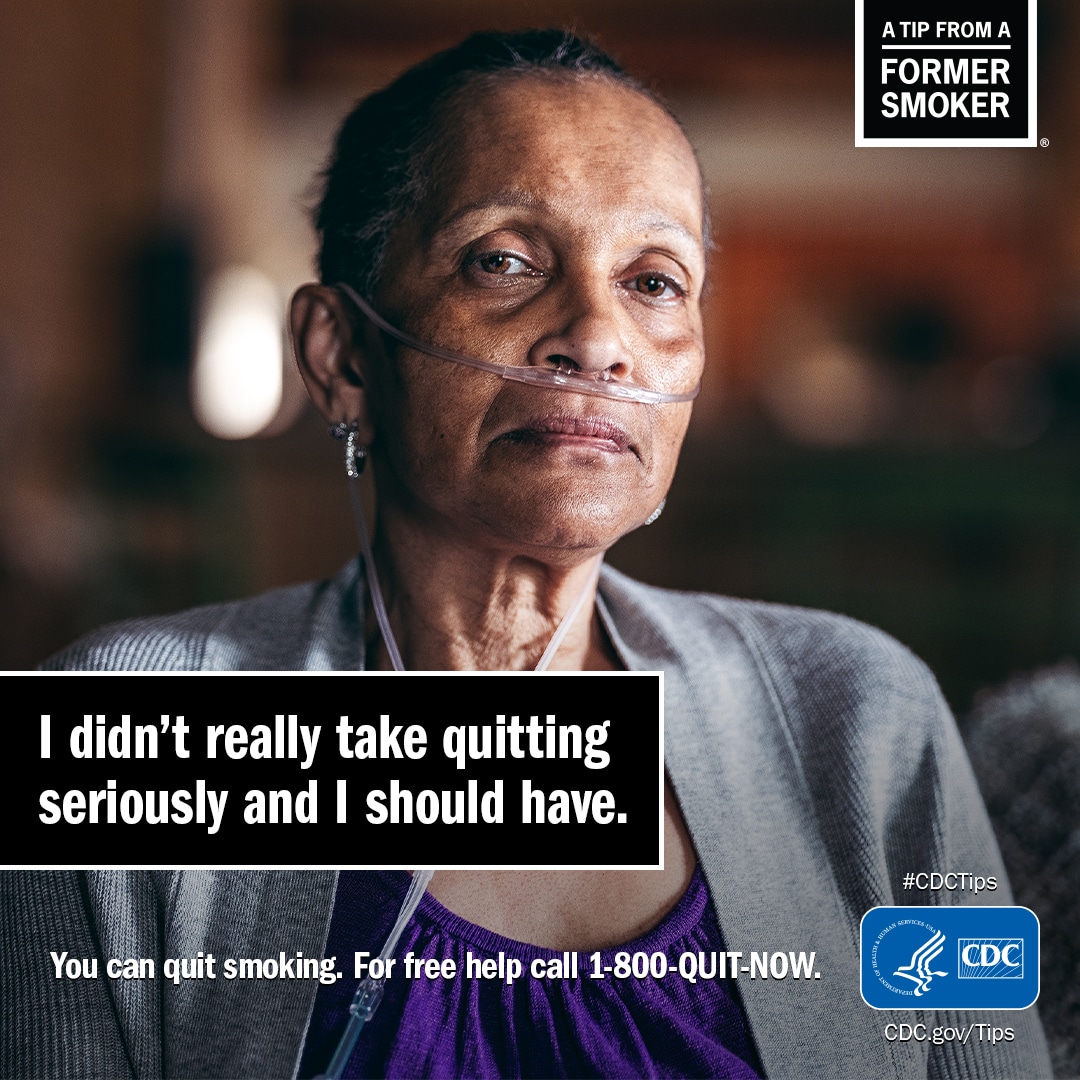
For every American who dies because of smoking, at least 30 are living with a serious smoking-related illness. Hard-hitting media campaigns are a proven way to raise awareness about the dangers of smoking and to motivate people to quit.
CDC’s Tips From Former Smokers® (Tips®) campaign, the first federally funded national tobacco education campaign, focuses on motivating US adults who smoke to try to quit. Tips features real people who are living with serious health conditions caused by smoking and breathing secondhand smoke. These compelling stories highlight the toll these conditions have taken on them and their families.
Tips connects people who smoke with resources to help them quit, including 1-800-QUIT-NOW, which directs people to free services from their state quitlines. With CDC support, state quitlines, and the National Texting Portal, which directs people to state or national services. CDC helpts state quitlines handle the increases in calls they receive during the Tips campaign.
Examples of Our Impact
- During 2012–2018, an estimated 16.4 million people who smoke have tried to quit and about 1 million have successfully quit because of the Tips campaign.
- The more exposure people who smoke have to Tips ads, the more likely they are to report making a quit attempt in the next 30 days.
- During 2012–2018, Tips helped prevent an estimated 129,000 early deaths and save an estimated $7.3 billion in smoking-related health care costs.
Help All People Quit Using Tobacco
CDC helps people quit using tobacco by promoting free support services such as:
- CDC.gov/quit, which has information about how to quit smoking and resources that provide quitting support.
- 1-800-QUIT-NOW, a toll-free telephone portal that routes callers to their state quitlines. Callers have access to a variety of quitting services available in multiple languages.
- National texting portal (text QUITNOW to 333888), which connects people to text messaging services and other state resources in English and Spanish. (Message and data rates may apply.)
State tobacco control programs can access cessation-related materials, including information about best practices, clinical guidelines, and health insurance coverage.
CDC also works with health insurers, health care providers, and employers to improve support for people who want to quit using tobacco. CDC’s activities include:
- Promoting coverage of proven tobacco cessation treatments and the removal of barriers to these treatments.
- Promoting health system changes that ensure that providers ask patients if they use tobacco, advise them to quit, and help them quit by providing cessation counseling and medicines.
- Encouraging employers to cover proven tobacco cessation treatments for workers and their families and to have tobacco-free workplace policies.
- Educating people who smoke on the benefits of using proven tobacco cessation treatments when trying to quit.
Examples of Our Impact
- CDC has developed new resources that healthcare providers can use to encourage smoking cessation among young people and adults who use tobacco CDC also has information about medicines to help people quit smoking.
- During the 2022 Tips® campaign, 1-800-QUIT-NOW received more than 365,000 calls, and over 142,000 of these calls were generated by the campaign. This represents a 64% increase compared to the number of calls 3 weeks before the 2022 campaign launch. The Spanish quitline, DÉJELO-YA, average weekly call volume was up by 127% compared to the 3 weeks preceding the 2022 campaign. The Asian Smokers’ Quitline had 9% more calls. In addition, more than 3,000 people signed up for the National Texting Portal.
Help All People Understand the Risks of Youth Tobacco Use
Despite the good news that cigarette smoking is decreasing among young people, over 2.5 million middle and high school students used electronic cigarettes (e-cigarettes) in 2022. This is a concern because any tobacco use among young people—whether smoked, smokeless, or electronic—is unsafe. Nicotine is addictive and can harm the developing brain.
In addition to monitoring tobacco use among young people, CDC helps parents, educators, health care providers, and other youth influencers understand and talk to young people about the dangers of tobacco products. CDC’s activities include:
- Developing easy-to-understand materials using the best available science.
- Using digital and social media platforms to create and deliver information where young people and youth influencers seek information.
- Working with all 50 states and the District of Columbia to support state and community activities to prevent use of emerging tobacco products, including e-cigarettes, among adolescents and young adults.

Examples of Our Impact
- In 2023, CDC’s Emerging Tobacco Products Communication Initiative placed national paid ads on the risks of youth e-cigarette use on digital and social media platforms. These ads can help educators talk with middle and high school students about e-cigarettes and nicotine addiction and encourage them to avoid or quit vaping. Ads were placed on Internet search engines, Facebook, Instagram, X (formerly known as Twitter), Pinterest, and LinkedIn. Animated videos about youth vaping were also placed on social media platforms.
- CDC partnered with the American Academy of Pediatrics to develop and publish Youth Tobacco Cessation: Considerations for Clinicians. This resource guides pediatric health clinicians in screening patients for tobacco use and providing support to help them quit.
Health Equity Highlight: Tobacco-Free Campuses at Mental Health and Substance Use Treatment Facilities
The Challenge:
In 2020, 23.1% of adults with a mental health condition reported past-month cigarette smoking, compared to 14.5% of adults with no mental health condition.
CDC’s Approach:
With CDC support, 47 states are using interventions to reduce smoking among people with behavioral health conditions by increasing tobacco use screening, tobacco cessation treatment access, and tobacco-free policies at facilities. See People With Mental Health Conditions for more information.